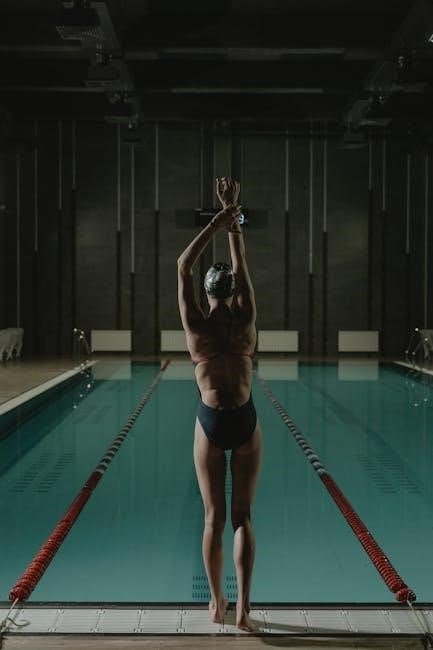Pool exercises offer a low-impact approach to alleviate lower back pain. The buoyancy of water reduces stress on the spine and joints. Aquatic activities allow for easier stretching and strengthening, promoting healing and pain reduction. Cardiorespiratory fitness can be achieved.
Benefits of Aquatic Therapy for Back Pain Relief
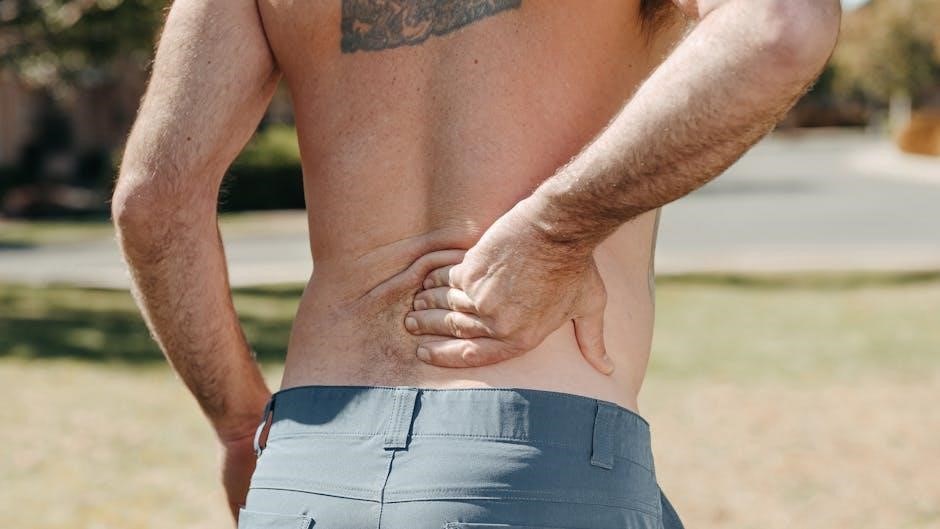
Aquatic therapy offers significant benefits for back pain relief. The water’s buoyancy reduces weight-bearing stress, allowing for easier movement and reduced joint pressure. Hydrostatic pressure provides support and can help reduce swelling and inflammation. Water resistance aids in muscle strengthening and endurance exercises with less strain.
Aquatic exercises improve flexibility and range of motion, crucial for back pain management. Patients often find it easier to perform movements in water that are difficult on land. This allows for a more comfortable and effective therapeutic experience. The warmth of the water can also soothe muscles and promote relaxation, further alleviating pain. Aquatic therapy enhances cardiorespiratory fitness, an important aspect of overall health and back pain management. Improved core strength and stability are also benefits.

Understanding Lower Back Pain
Lower back pain is a common issue stemming from muscle strains, disc problems, or nerve compression. Poor posture can be a contributing factor. Core-strengthening exercises and awareness of body mechanics are important for prevention and management.
Common Causes of Lower Back Pain
Lower back pain often arises from various factors affecting the spine, muscles, and surrounding structures. Muscle strains or sprains, frequently caused by improper lifting techniques or sudden movements, are prevalent culprits. Degenerative disc disease, a gradual breakdown of spinal discs, can lead to pain and stiffness. Bulging or ruptured discs may compress nerves, causing radiating pain. Arthritis, particularly osteoarthritis, can inflame spinal joints. Poor posture, especially prolonged sitting or slouching, contributes to muscle imbalances and strain. Lack of regular exercise weakens supporting muscles, increasing vulnerability to injury. Other potential causes include spinal stenosis, scoliosis, and, in rare cases, infections or tumors. Identifying the specific cause is crucial for effective management and treatment strategies.
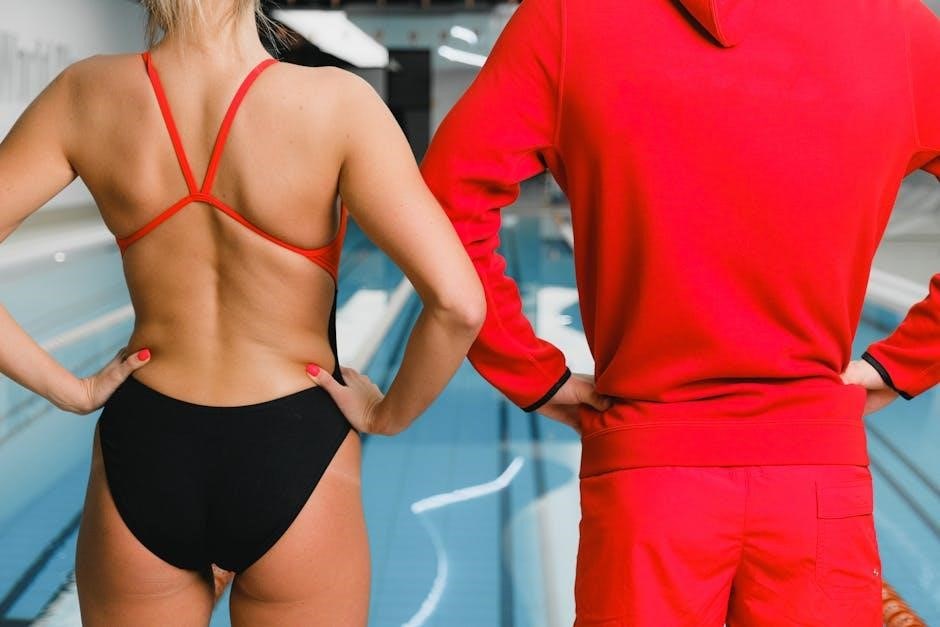
Preparing for Pool Exercises
Before starting pool exercises, ensure the water temperature is comfortable. Warm water helps relax muscles. Begin with a gentle warm-up. This prepares your body for activity. Stay hydrated, and listen to your body, avoiding overexertion.
Ensuring Correct Posture in the Water
Maintaining proper posture in the water is crucial for maximizing benefits and preventing further strain on your lower back. Stand with your feet shoulder-width apart, engaging your core muscles to stabilize your spine. Avoid arching your back excessively; instead, aim for a neutral spine position. Imagine a straight line from your ear, shoulder, hip, to ankle.
When performing exercises, focus on controlled movements and avoid jerky motions. Keep your head aligned with your spine, looking straight ahead. Be mindful of tilting your pelvis slightly to engage your abdominal muscles. This helps support your lower back throughout the exercises.
If using a pool noodle or the pool wall for support, maintain a comfortable grip without hunching your shoulders. Regularly check your posture in the water, making adjustments as needed to ensure proper alignment and minimize stress on your back.
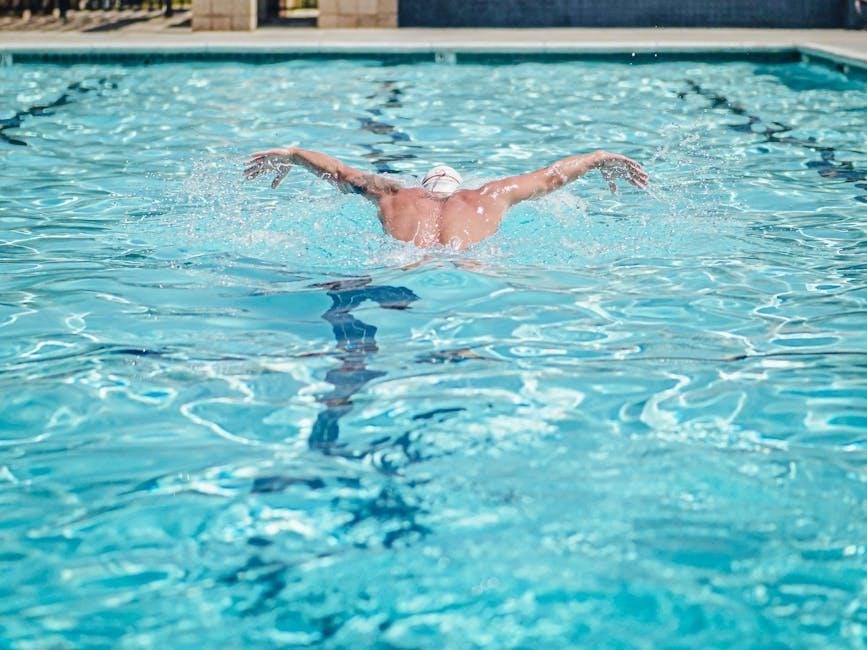
Effective Pool Exercises
Pool exercises offer low-impact options for back pain relief. These include knee-to-chest, pelvic tilts, and leg lifts. Pool walking and lunges are also beneficial. Heel lifts at the pool edge can further strengthen muscles and improve stability.
Knee to Chest Exercise in Water
The knee to chest exercise is a gentle way to stretch the lower back and improve flexibility in the pool. Begin standing in chest-deep water, ensuring you have enough space to move freely. Maintain a neutral spine and engage your core muscles for stability. Slowly lift one knee towards your chest, using your hands to gently pull it closer if needed.
Hold the position for a few seconds, feeling a comfortable stretch in your lower back and buttocks. Avoid pulling too forcefully, and listen to your body to prevent any pain or discomfort. Slowly lower your leg back to the starting position and repeat with the opposite leg. Alternate between each leg for a set number of repetitions, focusing on controlled movements and maintaining proper posture throughout the exercise. This exercise can help alleviate tension and improve mobility in the lower back.
Pelvic Tilts in the Pool
Pelvic tilts in the pool are a gentle exercise to improve core stability and reduce lower back pain. Stand in chest-deep water, holding onto the side of the pool for support if needed. Engage your abdominal muscles and maintain a neutral spine. Gently tilt your pelvis backward, flattening your lower back against the pool wall or imagining you are pressing your tailbone down.
Hold this position for a few seconds, feeling a gentle contraction in your abdominal muscles. Then, slowly tilt your pelvis forward, arching your lower back slightly. Repeat this movement rhythmically, alternating between posterior and anterior pelvic tilts. Focus on controlled movements and maintaining proper posture throughout the exercise. The water’s resistance provides gentle support, allowing for a comfortable and effective core workout. Perform several repetitions, adjusting the range of motion to your comfort level.
Leg Lifts in the Water
Leg lifts in the water are an excellent exercise for strengthening core and lower back muscles, contributing to pain reduction. Stand in chest-deep water, holding onto the pool’s edge for balance. Keep your back straight and engage your abdominal muscles to stabilize your core. Slowly lift one leg forward, keeping it straight but not locked. Lift to a comfortable height, avoiding any strain on your lower back.
Hold the lifted position for a moment, feeling the engagement of your core and leg muscles. Gradually lower the leg back to the starting position. Repeat the exercise with the opposite leg, alternating sides. The water provides resistance, making the exercise more challenging yet supportive. Ensure controlled movements and avoid arching your back. Perform a set number of repetitions on each leg, adjusting the intensity based on your fitness level and comfort.
Pool Walking and Lunges
Pool walking and lunges provide a gentle yet effective way to strengthen lower back and leg muscles while minimizing stress on joints. Begin by walking in the pool, focusing on maintaining good posture and engaging your core. The water’s resistance enhances muscle activation, promoting strength and stability. Gradually increase your pace and stride length to challenge yourself further.
To incorporate lunges, stand with feet shoulder-width apart and step forward with one leg, lowering your body until both knees are bent at approximately 90 degrees. Ensure your front knee stays behind your toes. Push off with your front foot to return to the starting position, alternating legs with each lunge. The buoyancy of the water reduces the impact on your joints. Maintain control and avoid overextending during lunges.
Heel Lifts at Pool Edge
Heel lifts at the pool edge are a simple exercise to strengthen calf muscles and improve ankle stability, contributing to better overall lower back support. Stand facing the pool edge, holding on for balance. Position your feet shoulder-width apart. Slowly rise up onto your toes, lifting your heels as high as comfortably possible. Focus on engaging your calf muscles throughout the movement.
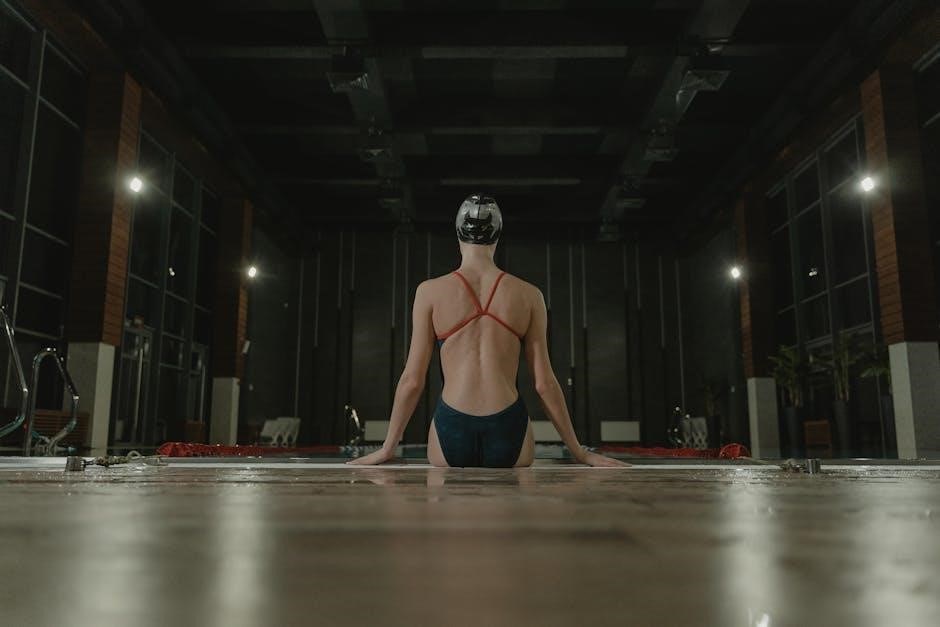
Pause briefly at the top, then slowly lower your heels back down to the pool floor. Repeat this movement several times, maintaining control and avoiding any sudden drops. This exercise can help improve posture and reduce strain on the lower back by strengthening the muscles that support proper alignment. Ensure you have a firm grip on the pool edge for stability. This exercise increases lower leg strength.
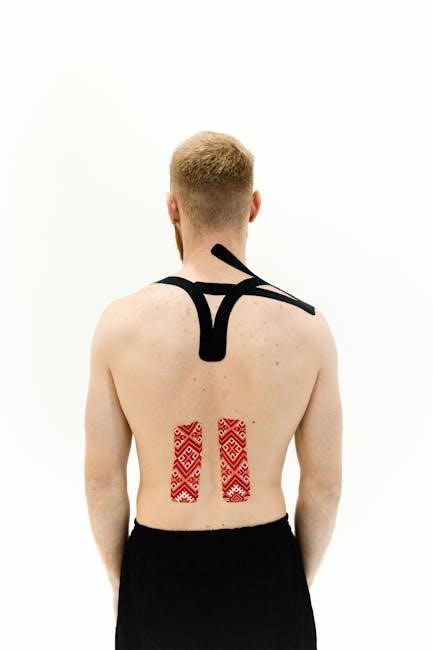
Using Kickboards for Lower Back Stability
Kickboards enhance lower back stability in pool exercises. Sitting on a kickboard engages core muscles. Maintaining balance requires spinal stabilization. This strengthens the lower back. This base builds a strong lower back.
Maintaining Balance on a Kickboard
Maintaining balance on a kickboard is crucial for engaging core muscles and enhancing lower back stability. Begin in a shallow part of the pool, sitting upright on the kickboard. Keep your spine straight, activating your abdominal muscles. This prevents leaning or tilting, ensuring proper engagement.
Focus on using your core to stay balanced, rather than relying on your legs or arms. Aim to maintain this posture for 60 seconds, gradually increasing the duration as you become more comfortable. This exercise strengthens the muscles supporting your lower back, promoting stability and reducing pain. Engaging your core is vital for spinal health.

Stretches in the Pool
Pool stretches enhance flexibility and reduce lower back pain. Water supports the body, allowing for deeper stretches with less strain. These exercises target muscles in the back, hips, and legs, improving range of motion and promoting relaxation.

Lower Leg Stretch Against Pool Wall
This stretch targets the calf muscles and Achilles tendon, which can indirectly alleviate lower back pain by improving overall lower body flexibility. Begin by facing the pool wall, placing your hands on the edge for support. Position one foot forward and the other back, ensuring both knees are slightly bent to avoid hyper-extension.

Keep the heel of your back leg firmly planted on the pool floor to maximize the stretch. Gently lean into the wall, feeling the stretch in the lower leg of your back leg. Hold this position for 20-30 seconds, breathing deeply to enhance relaxation and increase the stretch’s effectiveness. Repeat on the opposite leg, ensuring equal stretching on both sides to maintain balance and symmetry. This exercise helps release tension and improve circulation in the lower legs, contributing to better posture and reduced strain on the lower back. Regular practice can lead to increased flexibility and reduced discomfort.
Aquatic exercise provides a statistically significant method to reduce lower back pain and improve physical function. It’s a low-impact, effective way to manage pain and enhance quality of life through consistent and appropriate exercises.
Long-Term Benefits of Aquatic Exercise for Back Pain
Sustained aquatic exercise offers significant long-term benefits for managing and alleviating chronic lower back pain. Consistent participation in pool-based activities can lead to improved spinal health through strengthening core muscles and enhancing flexibility; The buoyancy of water reduces joint stress, allowing for pain-free movement and improved range of motion over time.
Regular aquatic therapy helps in maintaining a healthy weight, reducing the risk of developing or worsening back pain. Enhanced cardiorespiratory fitness contributes to overall well-being and better management of pain. Individuals can experience improved posture and body mechanics, further reducing the likelihood of recurring back issues.
Moreover, the relaxing nature of water can reduce stress and tension, which often exacerbate back pain. Aquatic exercise promotes better sleep patterns, contributing to improved pain management and overall quality of life. Engaging in pool exercises can empower individuals to take control of their back health and maintain an active, pain-free lifestyle.
